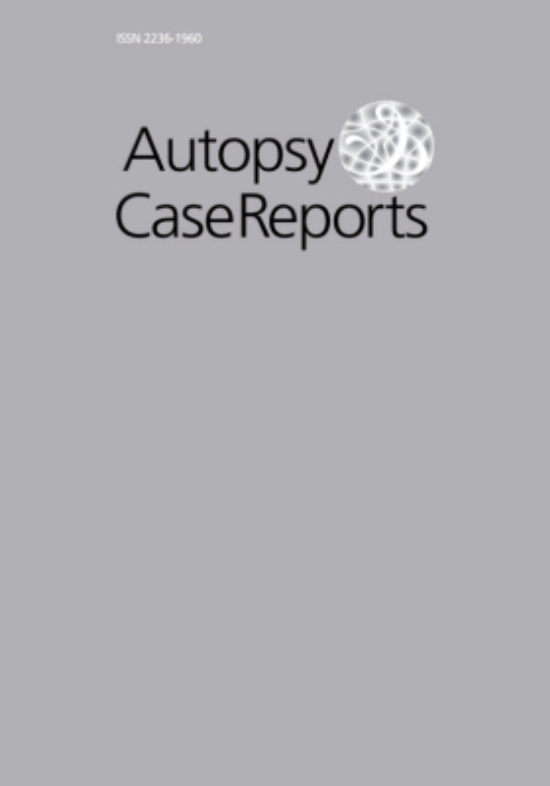The need for mandatory autopsy teaching in Forensic Medicine for medical students
DOI:
https://doi.org/10.4322/acr.2024.509Keywords:
autopsy, education, forensic medicine, undergraduate, teachingAbstract
The effectiveness of the autopsy as an educational tool in forensic medicine courses has been widely acknowledged, and medical students were expected to attend regularly. Nevertheless, the use of autopsies for teaching has dramatically declined in recent years and worldwide despite their high-value benefits. This study aims to understand the importance and relevance of attending autopsies during forensic teaching sessions and identify any challenges that may impede attendance. A self-administered online questionnaire that assesses the knowledge, attitudes, and practices related to autopsies attendance was distributed to fourth-year medical students at the National Defence University of Malaysia and Universiti Sains Islam Malaysia. A total of 99 respondents were involved in this study. Our findings indicate that most respondents (over 85%) demonstrated good knowledge of forensic medicine. Pearson's statistical test revealed a significant correlation between the knowledge and students' attitudes toward autopsy. This study demonstrates the need to strategically integrate autopsy attendance into medical curricula to encourage constructive attitudes and practices among medical students. Students gain the most benefits from frequently attending autopsies. Passionate educators can conduct preparatory sessions to set expectations and address concerns, encourage students to process their experiences, and reinforce learning outcomes in the mortuary setting. Mandatory autopsy teaching should be integrated into the curriculum to ensure medical students have the necessary skills and knowledge to become competent doctors.
Downloads
References
The Royal College of Pathologists. Guidelines on autopsy practice. The Report of a Working Group of the Royal College of Pathologists. London: The Royal College of Pathologists; 2002.
Razak NA, Haque M. The Vital Role of Forensic Medicine as a ‘Hidden Curriculum’ in Medical Education: current Perspectives. Advances in Human Biology. 2023;13(3):229-31. http://doi.org/10.4103/aihb.aihb_61_23.
Vanezis P. Education and training in forensic medicine in United Kingdom: fit for purpose? Med Sci Law. 2021;61(1, suppl):5-6. http://doi.org/10.1177/0025802420967544. PMid:33591880.
Loughrey MB, McCluggage WG, Toner PG. The declining autopsy rate and clinicians’ attitudes. Ulster Med J. 2000;69(2):83-9. PMid:11196736.
O’Grady G. Death of the teaching autopsy. BMJ. 2003;327(7418):802-3. http://doi.org/10.1136/bmj.327.7418.802. PMid:14525883.
Schmeling A, Kellinghaus M, Becker JC, Schulz R, Schäfer A, Pfeiffer H. A web-based e-learning programme for training external post-mortem examination in curricular medical education. Int J Legal Med. 2011;125(6):857-61. http://doi.org/10.1007/s00414-011-0613-2. PMid:21901359.
O’grady G. The Breakfast Club: case study of a teaching-autopsy curriculum. Med Teach. 2004;26(4):377-8. http://doi.org/10.1080/01421590410001696399. PMid:15203854.
Burton JL, Scheimberg I, Bates AW, Lee A, Holbrook M, Morgan G. Getting consent for necropsies: perhaps we should seek consent to show necropsies to students. BMJ. 2001;323(7326):1426. http://doi.org/10.1136/bmj.323.7326.1426. PMid:11744571.
Taufan, A. Hubungan tingkat pengetahuan dokter muda tentang jenis malpraktik dengan kurikulum hukum kesehatan pada stase forensik medikolegal. Jurnal Soshum Insentif. 2019;2(2):164-72. https://doi.org/10.36787/jsi.v2i2.101.
Bendow EW. Medical students’ views on necropsies. J Clin Pathol. 1990;43(12):969-76. http://doi.org/10.1136/jcp.43.12.969. PMid:2266182.
Anders S, Fischer-Bruegge D, Fabian M, Raupach T, Petersen-Ewert C, Harendza S. Teaching post-mortem external examination in undergraduate medical education: the formal and the informal curriculum. Forensic Sci Int. 2011;210(1-3):87-90. http://doi.org/10.1016/j.forsciint.2011.02.008. PMid:21376489.
Sergentanis TN, Papadodima SA, Evaggelakos CI, Mytilinaios DG, Goutas ND, Spiliopoulou CA. Students’ physical and psychological reactions to forensic dissection: are there risk factors? Anat Sci Educ. 2010;3(6):287-94. http://doi.org/10.1002/ase.182. PMid:21046569.
Bamber AR, Quince TA, Barclay SI, Clark JD, Siklos PW, Wood DF. Medical student attitudes to the autopsy and its utility in medical education: A brief qualitative study at one UK medical school. Anat Sci Educ. 2014;7(2):87-96. http://doi.org/10.1002/ase.1384. PMid:23878069.
Marshall R, Cartwright N, Mattick K. Teaching and learning pathology: a critical review of the English literature. Med Educ. 2004;38(3):302-13. http://doi.org/10.1111/j.1365-2923.2004.01775.x. PMid:14996340.
Johnson EO, Charchanti AV, Troupis TG. Modernization of an anatomy class: from conceptualization to implementation. A case for integrated multimodal–multidisciplinary teaching. Anat Sci Educ. 2012;5(6):354-66. http://doi.org/10.1002/ase.1296. PMid:22730175.
Zampieri F, Rizzo S, Thiene G, Basso C. The clinico-pathological conference, based upon Giovanni Battista Morgagni’s legacy, remains of fundamental importance even in the era of the vanishing autopsy. Virchows Arch. 2015;467(3):249-54. http://doi.org/10.1007/s00428-015-1785-9. PMid:25989714.
Downloads
Published
Issue
Section
License
Copyright (c) 2024 Nurul Kharmila Abdullah, Nur Arina Ahmad, Shalinawati Binti Ramli, Nadiawati Abdul Razak

This work is licensed under a Creative Commons Attribution 4.0 International License.
Copyright
Authors of articles published by Autopsy and Case Report retain the copyright of their work without restrictions, licensing it under the Creative Commons Attribution License - CC-BY, which allows articles to be re-used and re-distributed without restriction, as long as the original work is correctly cited.



